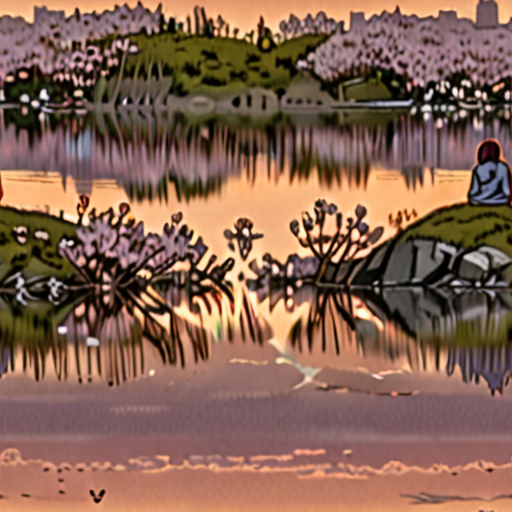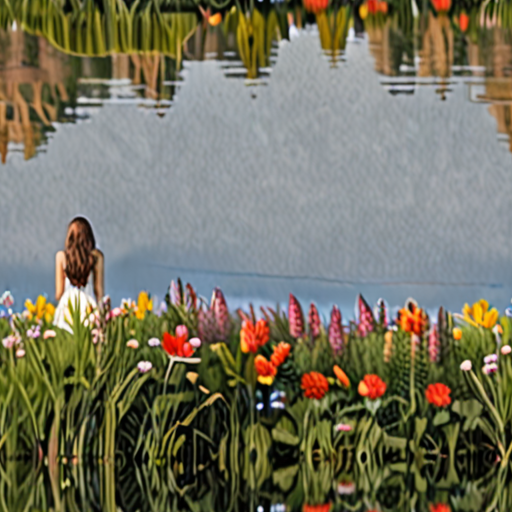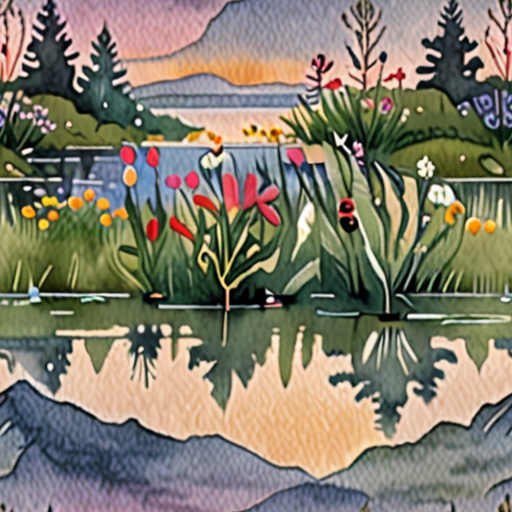As we navigate through life’s complexities, it’s easy to overlook the simple yet profound moments that bring us joy and fulfillment. Reflective moments of happiness are those fleeting glimpses into our inner world where creativity and positivity converge, allowing us to tap into our deepest desires and aspirations. By exploring these moments, we can gain a deeper understanding of what it means to be truly happy and how we can cultivate a sense of well-being that permeates every aspect of our lives.

The Reflection of Being Happy
As I reflect on what it means to be happy, I realize that it’s not just a feeling, but a state of mind that encompasses various aspects of our lives.
- Finding Strength in Forgiveness
- Hoping in One’s Battles
- Security at the Stage of Fear
- Loving in Disagreements
For me, being happy is about embracing the complexities of life and finding ways to navigate its challenges with resilience and optimism.
- Embracing Imperfection
- Cultivating Gratitude
- Prioritizing Self-Care
- Nurturing Meaningful Relationships
By focusing on these aspects, I’ve come to understand that true happiness is not just a fleeting emotion, but a deep sense of fulfillment that arises from living a purpose-driven life.
Reflecting on Sadness
I believe that reflecting on sadness is an essential part of the healing process, allowing us to learn valuable lessons from our experiences and grow as individuals.
- Identifying Patterns
- Practicing Self-Compassion
- Seeking Support
- Forgiving Ourselves
By acknowledging and working through our emotions, we can develop a greater understanding of ourselves and cultivate a deeper appreciation for the beauty of life.
Conclusion
Ultimately, the reflection of being happy is a personal and ongoing journey that requires patience, self-awareness, and a willingness to grow and evolve.
Reflective Happiness
Reflective happiness refers to the feeling of satisfaction and contentment we experience when we reflect on our lives, thinking about the choices we’ve made, the relationships we’ve built, and the accomplishments we’ve achieved.
- It involves looking back on past experiences and evaluating whether they have contributed positively to our overall well-being.
- This type of happiness is often characterized by a sense of gratitude, appreciation, and acceptance of what has been.
- Reflective happiness can be influenced by various factors, including our values, goals, and relationships.
Key Components of Reflective Happiness
- Satisfaction with Life Choices: We feel happy when we look back on our decisions and believe they were wise and beneficial.
- Appreciation for Relationships: Strong connections with loved ones contribute significantly to our reflective happiness.
- Achievements and Accomplishments: Celebrating our successes and progress towards our goals boosts our reflective happiness.
- Personal Growth: Recognizing our growth and development as individuals contributes to a positive reflection of our lives.
Practicing Reflective Happiness
To cultivate reflective happiness, try the following:
- Mindfulness and Self-Reflection: Regularly take time to reflect on your thoughts, feelings, and actions.
- Gratitude Practice: Focus on the things you’re thankful for each day.
- Journaling: Write down your thoughts, feelings, and experiences to process and reflect on them.
- Connect with Nature: Spend time outdoors to appreciate the beauty and wonder of the world around you.
Benefits of Reflective Happiness
Reflective happiness offers numerous benefits, including:
- Improved Mental Health: Reflective happiness can reduce stress, anxiety, and depression.
- Increased Resilience: Focusing on the positive aspects of your life helps you bounce back from challenges.
- Better Relationships: Appreciating your relationships and connections strengthens bonds and fosters deeper understanding.
- Greater Purpose and Meaning: Reflective happiness helps you identify your values and passions, leading to a more fulfilling life.

The Best Explanation About Happiness
Happiness can be described as the experience of joy, contentment, or positive well-being, combined with a sense that one’s life is good, meaningful, and worthwhile.
-
Defining Happiness
Happiness is often considered the opposite of sadness, and it’s a sense of well-being, joy, or contentment that people experience when they’re successful, safe, or lucky.
-
Key Factors Contributing to Happiness
Research suggests that several factors contribute to overall happiness, including:
- Positive relationships with family and friends
- A sense of purpose and meaning in life
- Good physical and mental health
- Financial security and stability
- Engagement in activities that bring joy and fulfillment
-
Practical Strategies for Increasing Happiness
While happiness is subjective and can vary from person to person, there are certain strategies that can increase the likelihood of experiencing happiness:
- Prioritize self-care and engage in regular exercise
- Nurture positive relationships and social connections
- Set realistic goals and work towards achieving them
- Practice gratitude and reflect on the good things in life
- Seek out new experiences and challenges
-
Overcoming Barriers to Happiness
Despite our best efforts, we may still face obstacles that prevent us from experiencing happiness. In these situations, it’s essential to:
- Recognize and acknowledge our emotions
- Seek support from loved ones or professionals
- Develop coping strategies and problem-solving skills
- Foster a growth mindset and learn from failures
- Cultivate self-compassion and practice self-forgiveness
By understanding the complexities of happiness and implementing practical strategies, we can increase our chances of experiencing joy, contentment, and overall well-being.

Does Happiness Make You More Creative?
I’ve always been fascinated by the relationship between happiness and creativity.
- Happiness has been shown to increase our ability to think outside the box and come up with innovative solutions.
- When we’re happy, our brains are more open to new ideas and experiences, allowing us to tap into our creative potential.
The Science Behind Happiness and Creativity
Research suggests that happiness can have a profound impact on our cognitive abilities, including our creativity.
- Studies have found that people who experience positive emotions, such as joy and excitement, tend to perform better on creative tasks.
- Happiness has also been linked to increased gray matter in the brain, particularly in areas responsible for creativity and problem-solving.
The Benefits of Happy Creativity
So, what does it mean to be a happy creator? Here are just a few benefits:
- Increased productivity: When we’re happy, we’re more motivated and focused, leading to greater productivity and efficiency.
- Better work-life balance: Happy creators tend to have a healthier balance between their work and personal lives, leading to reduced stress and burnout.
- More innovative thinking: Happiness allows us to approach problems from unique angles, leading to more innovative and effective solutions.
How to Cultivate Happy Creativity
So, how can you cultivate happy creativity in your own life? Here are a few tips:
- Prioritize self-care: Taking care of your physical and mental health is essential for maintaining a happy and creative mindset.
- Practice gratitude: Focusing on the things you’re thankful for can help shift your perspective and increase feelings of happiness.
- Take risks: Stepping out of your comfort zone and taking calculated risks can help stimulate creativity and innovation.
Conclusion
While there’s still much to learn about the relationship between happiness and creativity, one thing is clear: happiness has the power to unlock our full creative potential.
The Number One Cause of Happiness
As someone who values meaningful connections and storytelling, I’ve always been fascinated by what makes people happy.
- Interpersonal relationships have consistently emerged as a leading predictor of happiness.
- A strong social support network can boost our mood, reduce stress, and increase feelings of belonging.
- In fact, studies have shown that people with close relationships tend to live longer, healthier lives.
So, how can we cultivate deeper, more meaningful relationships in our lives?
- Nurture your friendships: Make time for regular check-ins with loved ones, whether it’s a weekly phone call or a monthly coffee date.
- Prioritize quality over quantity: Focus on building a smaller circle of close friends rather than trying to maintain a large social network.
- Practice active listening: Give your full attention to others, ask open-ended questions, and show genuine interest in their lives.
By investing in our relationships and prioritizing connection, we can unlock a deeper sense of happiness and fulfillment in our lives.
Why Relationships Matter
When we feel seen, heard, and understood by others, our brains release oxytocin, dopamine, and endorphins – chemicals that promote feelings of pleasure, relaxation, and bonding.
- This social support can help us navigate life’s challenges with greater ease and resilience.
- It can also foster a sense of community and belonging, which is essential for our emotional and mental well-being.
Cultivating Meaningful Connections
As we strive to build stronger relationships, let’s remember that it’s the little moments that count – a kind word, a listening ear, or a helping hand.
By showing up for others and being present in our interactions, we can create a ripple effect of kindness and compassion that spreads far beyond our immediate circles.

Unlocking the Power of Creativity and Joy
As someone who values personal storytelling and creative reflections, I’ve always been fascinated by the intricate relationship between creativity and joy. In my own experiences, I’ve found that engaging in creative activities can evoke feelings of happiness and fulfillment, but what exactly drives this connection?
- The Science Behind Creativity and Joy
- The Role of Dopamine in Creative Expression
- Nurturing a Culture of Creativity and Joy
- Embracing Imperfection and Emotion in Creative Pursuits
The Science Behind Creativity and Joy
Research suggests that engaging in creative activities triggers the release of dopamine, a neurotransmitter closely tied to pleasure and reward. This chemical reaction occurs when we experience moments of inspiration and satisfaction during our creative process, reinforcing the link between creativity and happiness.
The Role of Dopamine in Creative Expression
Dopamine plays a crucial role in motivating us to pursue creative endeavors. As we engage in creative activities, our brains release dopamine, which reinforces the behavior and encourages us to continue exploring our imagination. This positive feedback loop can lead to a sense of flow and enjoyment, making creativity a source of joy and fulfillment.
Nurturing a Culture of Creativity and Joy
To foster a culture of creativity and joy, it’s essential to encourage experimentation and risk-taking. By embracing imperfection and emotion in our creative pursuits, we can tap into our unique perspectives and experiences, leading to more authentic and meaningful expressions of ourselves.
Embracing Imperfection and Emotion in Creative Pursuits
Rather than striving for perfection, we should celebrate the beauty of imperfection and allow ourselves to be vulnerable in our creative expression. By doing so, we can tap into our emotions and experiences, leading to more genuine and relatable artistry.
Conclusion
In conclusion, the relationship between creativity and joy is complex and multifaceted. By understanding the science behind creativity and joy, nurturing a culture of creativity and joy, and embracing imperfection and emotion in our creative pursuits, we can unlock the full potential of our imagination and live more fulfilling lives.

0 Comments